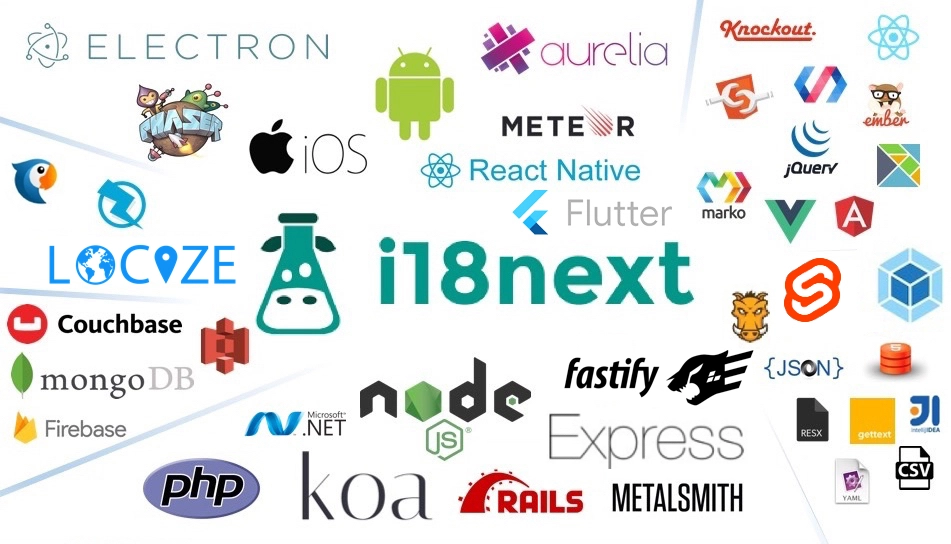The joy, the pride and the burden of maintaining open source
As a maintainer of i18next, an open-source localization library, I can attest that there is nothing quite like the feeling of joy and pride that comes from contributing to the open-source community. Seeing others use and appreciate your work is a feeling like no other. But with great power comes great responsibility, and maintaining an open-source project can sometimes be a heavy burden at times.
Let me paint you a picture: It's a sunny Sunday afternoon, and you're ready to relax and enjoy the weekend. But then, your phone starts buzzing. It's a notification from GitHub, alerting you to a new issue or pull request. You try to ignore it, but the nagging sense of responsibility sets in. You can't help but wonder, "What if this is a critical bug that needs to be fixed ASAP?" And so, you reluctantly open your laptop, ready to tackle the problem at hand. That, my friends, is the joy and the burden of maintaining open source.

But it's not just the constant influx of issues and pull requests that can be overwhelming. It's also the pressure to constantly improve and update the project to keep up with the ever-changing technology landscape. With i18next, for example, we need to stay on top of new localization trends and technologies, as well as ensure compatibility with the latest versions of popular frameworks and libraries. It can be a lot to keep up with, especially when you're also trying to balance a full-time job, family, and other commitments.

Despite the challenges, maintaining an open-source project is a rewarding experience that I wouldn't trade for anything. The sense of community and collaboration is truly special, and it's an honor to be a part of something that helps so many people. Plus, there's nothing quite like the feeling of satisfaction when you finally fix that tricky bug or implement a new feature that makes the project even better.

Another aspect of maintaining an open source project that can be challenging is dealing with demanding users. While most users understand and appreciate the hard work that goes into maintaining a project, some can be quite demanding, even threatening to stop using the library if their special request isn't implemented. It can be difficult to navigate these situations, as you want to keep your users happy, but you also need to consider the overall direction and goals of the project. It's important to remember that, as the maintainer, you have the final say over what gets added to the project, and what doesn't. It's also important to communicate with your users, and explain your reasoning behind certain decisions.
When maintaining an open source project, remember that no one is forcing anyone to use it. While it's important to listen to feedback and try to meet your users' needs, it's also important to remember that the project is open source and free to use. This means that users have the freedom to use the project or not, and they also have the ability to contribute to it, or even fork it if they want to make significant changes. As maintainers, we should always be open to feedback and suggestions, but we must also be confident in our decisions and the direction of the project. We should also remember that most of us are volunteering, and that for most of us, this is a hobby, passion, or side project, not a paid job. We should not burn ourselves out trying to please every user. When users start insisting on free and ongoing support, that's not good.
A common challenge in maintaining an open source project is dealing with users who report GitHub issues without enough information to reproduce and investigate the problem. Unfortunately, it's not uncommon for users to simply say "there's a bug" or "it doesn't work" without providing any additional details or context. This can make it extremely difficult for maintainers to understand and fix the problem.
This is where the concept of a minimal reproducible example comes in. A minimal reproducible example is a small, self-contained snippet of code that demonstrates the problem. It should include all the information necessary for the maintainer to reproduce the problem, including the version of the library, the environment, and any relevant configuration.
Providing a minimal reproducible example can greatly reduce the time and effort required to investigate and fix a problem. Without it, the maintainer may have to spend hours trying to understand and reproduce the problem, which can be frustrating for both the maintainer and the user.
It's important to educate users about the importance of providing a minimal reproducible example, and to communicate this clearly in your project's documentation. Some maintainers even have a template for issues and/or pull requests that requires the user to provide such an example.

It's also important to be patient and understanding when dealing with users who may not be familiar with the concept of a minimal reproducible example. Maintaining an open source project is a community effort, and it's important to work together to make the project better. Also, a pull request that includes a negative test case is very valuable.
Sometimes it is useful to write a larger guide or blog post that users can go through to avoid basic problems. For example, for using i18next in a React application, we wrote this blog post that covers all the initial issues and hurdles.
Remember that as a user of an open source library, you have the power to contribute to its development and make it even better. Don't be afraid to jump in and make a contribution, no matter how small. Every little bit helps, and it's a great way to give back to the community. Even if you are not a developer, you can contribute in other ways, such as writing documentation, or helping answer other users' questions.
In fact, the best way to get a bug in an open source library fixed is to fix it yourself and submit a pull request. It's not only a great way to give back to the community, but it also helps you learn new skills and understand the codebase better and learn new skills. So don't hesitate to roll up your sleeves and get involved.
In conclusion, maintaining an open source project is a challenging but rewarding experience. It takes dedication, hard work, and a lot of patience to keep an open source project running smoothly. But the sense of community and collaboration that comes with open source makes it all worthwhile. As a maintainer, it's important to remember that you're not alone in this journey, and that there are always other maintainers and contributors willing to help. As a user, remember that you have the power to contribute and make a difference.

Open source is a community effort, and everyone plays a role in its success. Maintainers, contributors, and users all have a responsibility to work together to improve the project. Maintainers should be open to feedback and suggestions, and users should provide clear, detailed information about their problems and, if possible, suggest solutions or provide minimal reproducible examples.
In short, maintaining an open source project is a challenging but rewarding experience that brings people together to work toward a common goal. It's important for everyone to work together. So let's continue to support and contribute to open source projects and make the world a better place, one line of code at a time.

Finally, I would like to thank Locize for giving us the opportunity to support our i18next community and allowing us to invest in open source activities. Without this support, i18next would not be where it is today.
